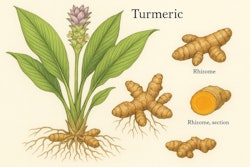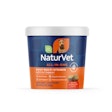
The gut microbiome serves as a central regulator of pet health that extends far beyond digestion, influencing skin conditions, joint inflammation and oral disease through circulating metabolites and immune system signaling, according to Jess Jarett, Ph.D., R&D Principal Scientist for Pet at Cargill.
Speaking during an Ask the Pet Food Pro chat sponsored by Cargill, Jarett explained how emerging research continues uncovering the microbiome's far-reaching effects across multiple body systems in cats and dogs.
Defining a healthy microbiome
A healthy gut microbiome performs specific functions including producing beneficial metabolites, converting bile acids and helping digest food, Jarett said. The community should remain stable and resilient to disruption.
"We're looking at large populations of healthy animals and seeing which bacteria we see over and over in these healthy animals," she explained. "Those are what we call the core microbiome in healthy pets."
Multiple factors shape the gut microbiome, with diet exerting the most significant influence. Macronutrient composition and moisture content both affect microbial populations. As pets age, their microbiomes tend to decline in diversity. For cats, outdoor access and exposure to prey, parasites and pathogens can shape the microbiome, while body size matters for dogs.
Cats and dogs demonstrate key microbiome differences reflecting their evolutionary backgrounds. Cats, as obligate carnivores, tend to have more diverse microbiomes that remain more consistent between individuals compared to dogs, which show greater variation possibly reflecting breed diversity.
The gut-skin connection
The link between gut health and skin conditions emerged from observations that animals with atopic dermatitis have distinctly different microbiomes, Jarett said. Research shows lower levels of beneficial gut-derived metabolites in populations with inflammatory skin conditions.
"When we can increase those beneficial metabolites, like short-chain fatty acids, that helps to improve the barrier integrity of the gut," Jarett explained. "So then we don't have so many of these really large, inappropriately large molecules moving from the gut into circulation where they can trigger inflammation and allergy."
Fecal microbiome transplant studies in multiple species have produced compelling results for atopic dermatitis and other skin conditions. Improving gut barrier integrity prevents large food molecules from passing through and provoking inflammatory reactions that pets experience as itching and skin irritation.
The gut-skin axis operates bidirectionally. Research in rodents demonstrates that skin wounds alter gut microbiome composition, creating important implications for pets trapped in itch-scratch cycles where scratching creates wounds that potentially affect gut health.
Supporting joint health
Dysbiosis in the gut triggers pro-inflammatory signaling processes that can perpetuate joint problems, Jarett said. Animals with joint conditions tend to have different microbiomes, and inflammatory markers appear in affected joints along with DNA from gut microbes.
"There's a sort of continuous process of turnover where mucus is produced by the host and broken down by bacteria, and that process should be in balance," she explained. Similarly, cartilage undergoes constant breakdown and remodeling, but when this process becomes imbalanced toward degradation, it triggers inflammation and creates a feedback loop.
Research in rodents shows that higher fiber diets can increase circulating short-chain fatty acids and notably reduce arthritis severity. Researchers replicated these effects by directly feeding short-chain fatty acids, demonstrating the metabolites' key role.
Not every animal, however, responds to microbiome-mediated interventions. In human trials of anti-inflammatory diets for arthritis, researchers identified key microbial taxa that, when promoted, helped ease symptoms, but only in people who already harbored those bacteria.
"If you don't have that group already in your microbiome, maybe those are some of the people who didn't respond to that intervention," Jarett said. "So I think lessons there for us for pets as well."
Oral health connections
The links between oral health and overall health prove particularly powerful, with periodontal disease and oral dysbiosis connected to inflammatory bowel disease, arthritis, neurodegenerative diseases, diabetes and gastrointestinal cancers, Jarett said.
Bacterial biofilms form on teeth and oral surfaces, potentially becoming calcified into calculus. When pathogenic bacteria colonize these biofilms, they release toxins and enzymes that trigger host immune responses while altering other bacteria's behavior. The resulting chronic inflammatory process creates conditions that favor pathogens and release nutrients feeding their growth.
"Because this is a mucous membrane in your mouth, some of these pathogens are even able to either enter immune cells or enter the bloodstream directly from the mouth as well, as well as, of course, being swallowed," Jarett explained.
This creates repeated pathogen input to the gut through swallowing, where they can colonize and disrupt gut microbiome function. The connection operates bidirectionally — inflammatory processes beginning in the gut can trigger inflammatory processes in oral tissues. Pet grooming behavior further connects these systems as dogs and cats lick themselves, linking oral, skin and gut microbiomes.
Practical applications
Prebiotic and probiotic ingredients can modulate the microbiome through direct immune system signaling, affecting existing gut bacteria, or providing beneficial metabolites directly to pets, said Jarett. Some ingredients have outperformed systemic drugs for certain conditions in research.
Jarett emphasized that fiber diversity may matter more than specific fiber types. Providing a broader range of fiber sources supports a wider community of beneficial bacteria rather than promoting just a small subset.
For carnivorous pets, protein sources also deserve consideration. Some bacteria in dogs and cats can produce beneficial metabolites like butyrate from protein rather than fiber, offering alternative approaches to supporting gut health.
Postbiotics present practical advantages over probiotics for pet food applications due to greater resistance to manufacturing processes. Because much of the beneficial effect comes from signaling — to other bacteria and the host immune system — microbes don't necessarily need to remain alive to function effectively. Research shows some strains prove equally or more effective as postbiotics compared to probiotics.
Early life represents a particularly important window for microbiome support. The microbiome in very early development proves crucial for training the immune system to respond appropriately, with benefits lasting throughout the animal's lifetime. Jarett noted, however, that times of challenge, such as antibiotic treatment or recurring gastrointestinal issues, also represent opportunities for targeted support.
"I think it's just such an exciting area of research and a really exciting time with so much science coming out," Jarett said, expressing optimism about using emerging research to meaningfully improve pet lives through nutrition.
To view the full Ask the Petfood Pro featuring Jarett or to see future chats, click here.















